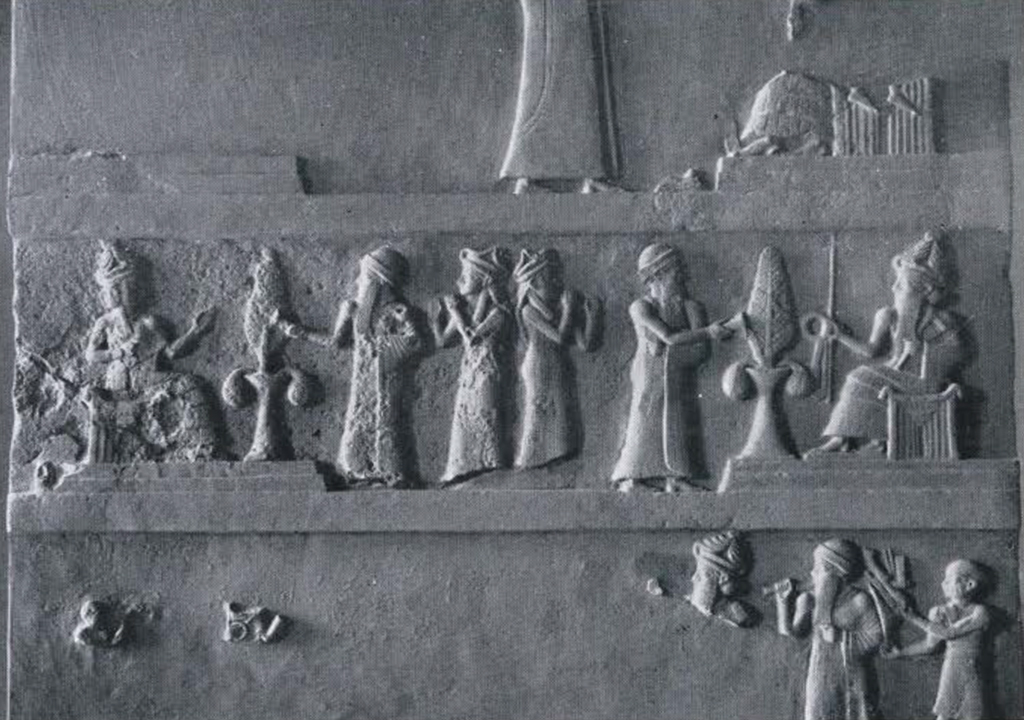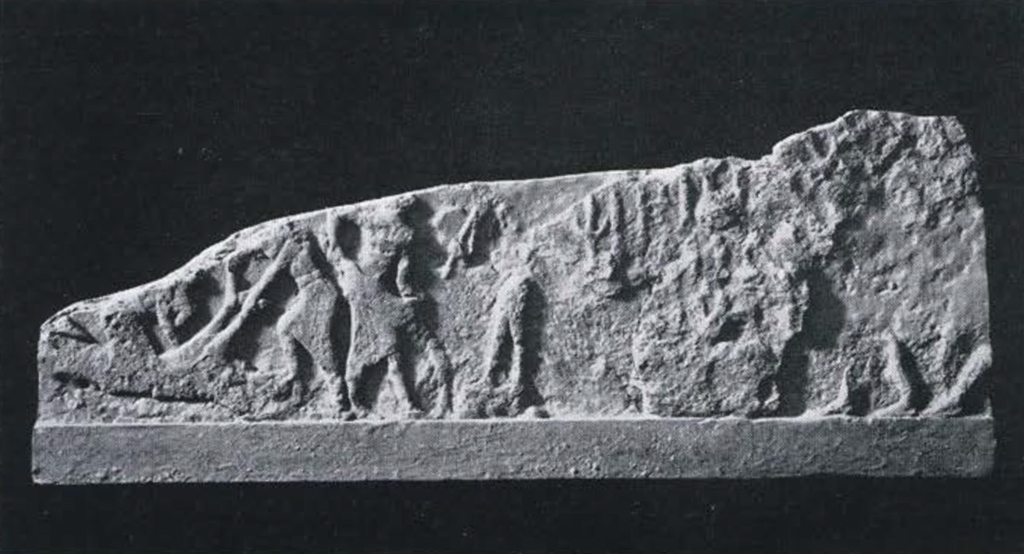The stela of Ur-Nammu, the largest sculptured slab recovered at Ur, is a monumental record of the building activities of the founder of the third dynasty. After the Guti had been driven out of the land by Utu-khegal of Uruk, the royalty passed to Ur, and for over a century Ur-Nammu and his successors ruled as kings of Sumer and Akkad, extended their dominion over Ashur and Elam, and claimed the empire over the four corners of the world, like Sargon of Agade before them and Hammurabi after them. Magnificent constructions, replacing smaller and older buildings, attested the wealth and power of the new capital. Most of them were begun by Ur-Nammu and completed by his son Shulgi: first, the temple of Nannar and Ningal, the moon-god and his wife, with its great brick tower resting on the artificial platform, surrounded by a strong wall, enclosing the main shrines; next, the great gate and hall of justice (Dub-lal-makh) giving access to the platform; then, outside the wall, three important buildings, the treasury (E-nun- makh), the royal palace (Kharsag-kalama), and the so-called Egipar, the fortified palace of the high priestess, built southwest of the temple on a spot named Nannar-karzida. The stela of Ur-Nammu stood in the courtyard below the hall of justice, and was raised there by Shulgi in honour of his father, the builder of the Ziggurat which dominates the ruins of Ur to the present day.

Museum Object Number: B16676
Image Number: 8414
The great slab, as now restored in the Babylonian Section of the University Museum, is 10 feet high, 5 feet wide, and 1 foot thick. Front and back are divided by raised bands into five registers. At the rounded top are seen the emblems of the gods of Sumer and Akkad, the crescent moon below the radiating sun. On a larger band is inscribed a list of the canals opened by royal command to insure the fertility of the land and its connection with the sea. Many fragments of the original slab are missing. We know that at the time of Ibi-Sin, the last of his dynasty, city and temple were ruined and plundered by the Elamites and their allies from Mari. The king himself and the statue of Nannar were taken prisoners to Susa. The stela was broken and its fragments scattered over the pavement of the courtyard, where they have been found and restored as far as possible. The main portion in front illustrates the actual building of the Ziggurat, the stage tower. On the back are ritual scenes connected with it. Register after register shows in low relief carved in the smooth limestone, the enthroned figures of Nannar and Ningal (Figure 39) opposed in marked parallelism. Ur-Nammu stands in turn in front of each. His name is inscribed on his fringed shawl. He pours a libation over green palms and bunches of dates in a tall vase shaped like an hour-glass. He receives the command to build the tower. Preceded by his patron god and shouldering the mason’s tools he goes to lay the foundation brick. Workers carry baskets of mud and climb ladders to the top of the wall. Youthful aerial figures pour from heaven the fertilizing rain, a reward for the pious work. Ritual scenes (Figure 40) follow on the back. A bull is sacrificed. The priests open its body, perhaps to read in the liver the signs of the divine will. A kid is beheaded and the blood is poured on the ground, while a piper, standing on a small base in front of a sacred grove, plays on the double pipes. Prisoners with hands tied behind their backs are led from one enthroned deity (?) towards a second. Two men beat huge drums with short round-headed sticks, a loud accompaniment to the sacrifice. In the last register a libation is poured over palms and date bunches, in front of an altar, and perhaps the statue of the deified king.

Museum Object Numbers: B16676.12B / B16676.46
Image Number: 8426

